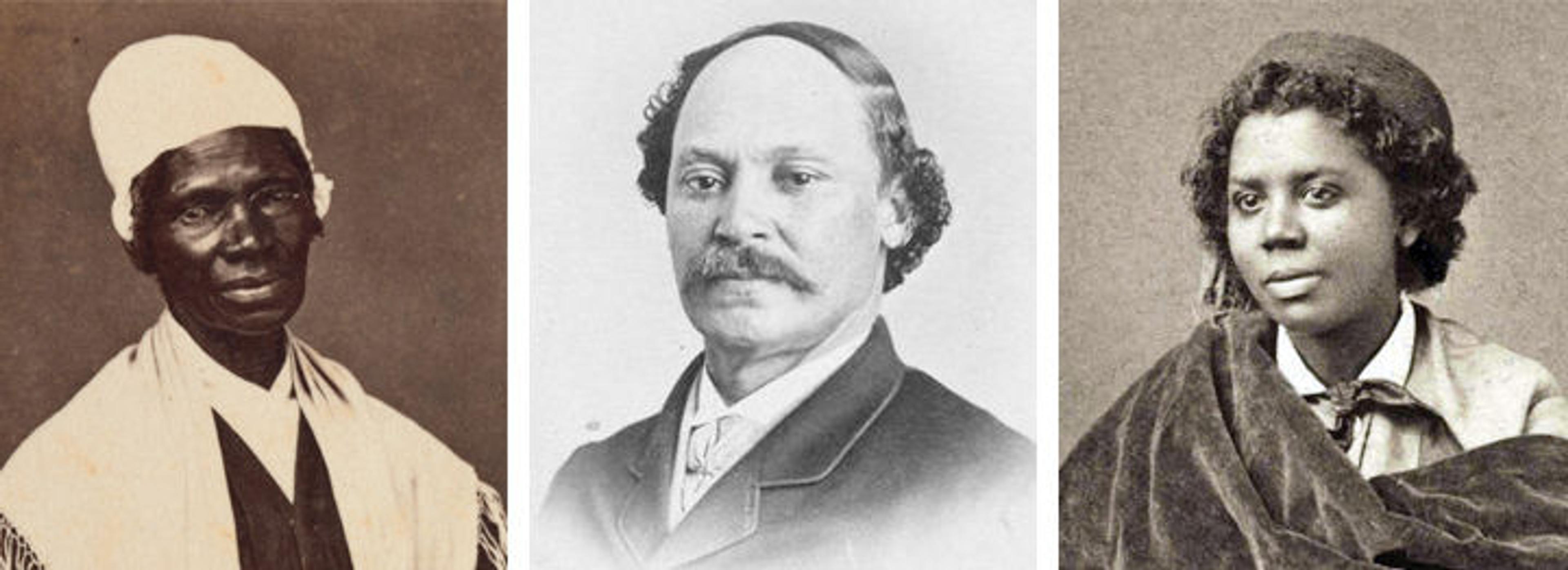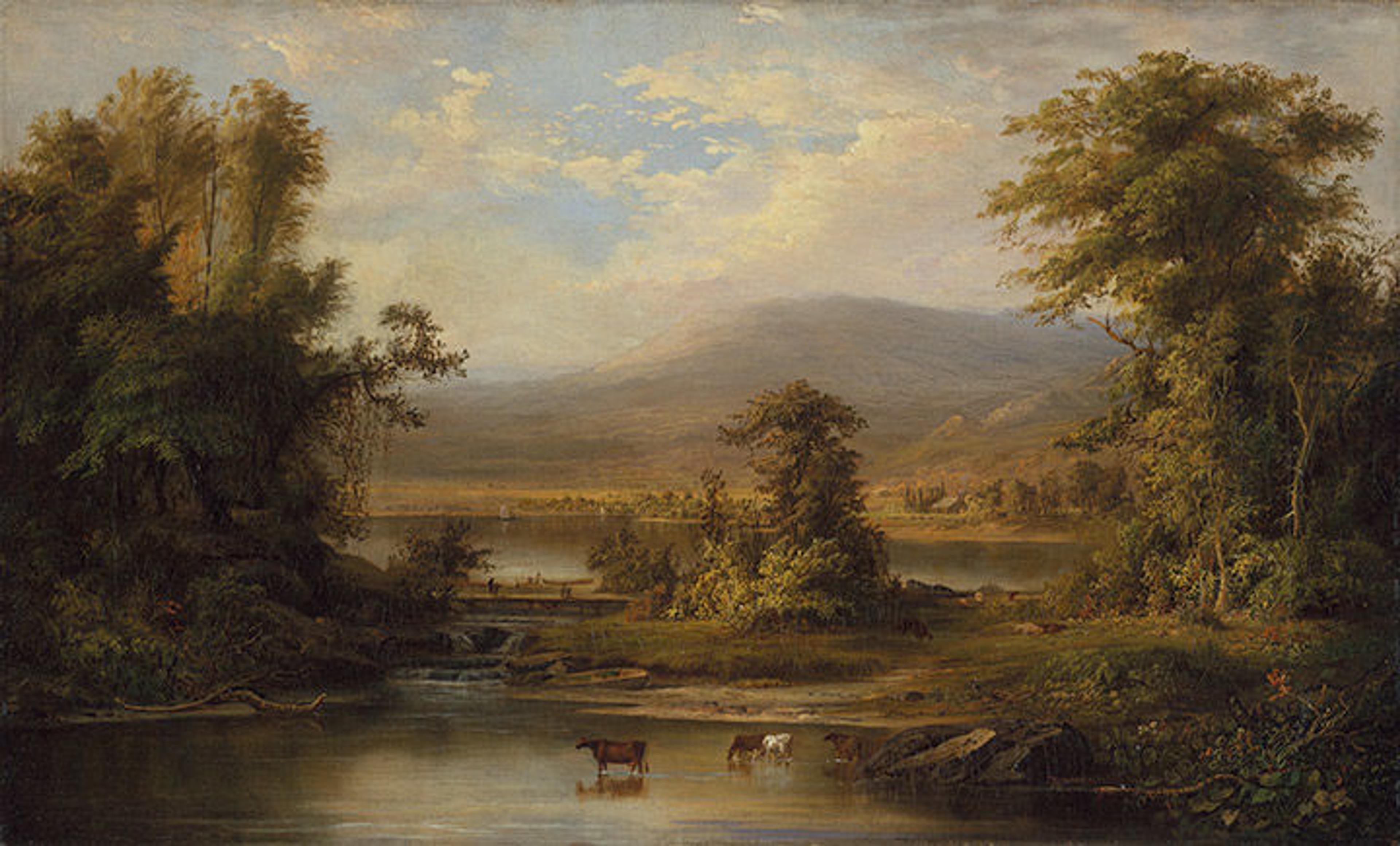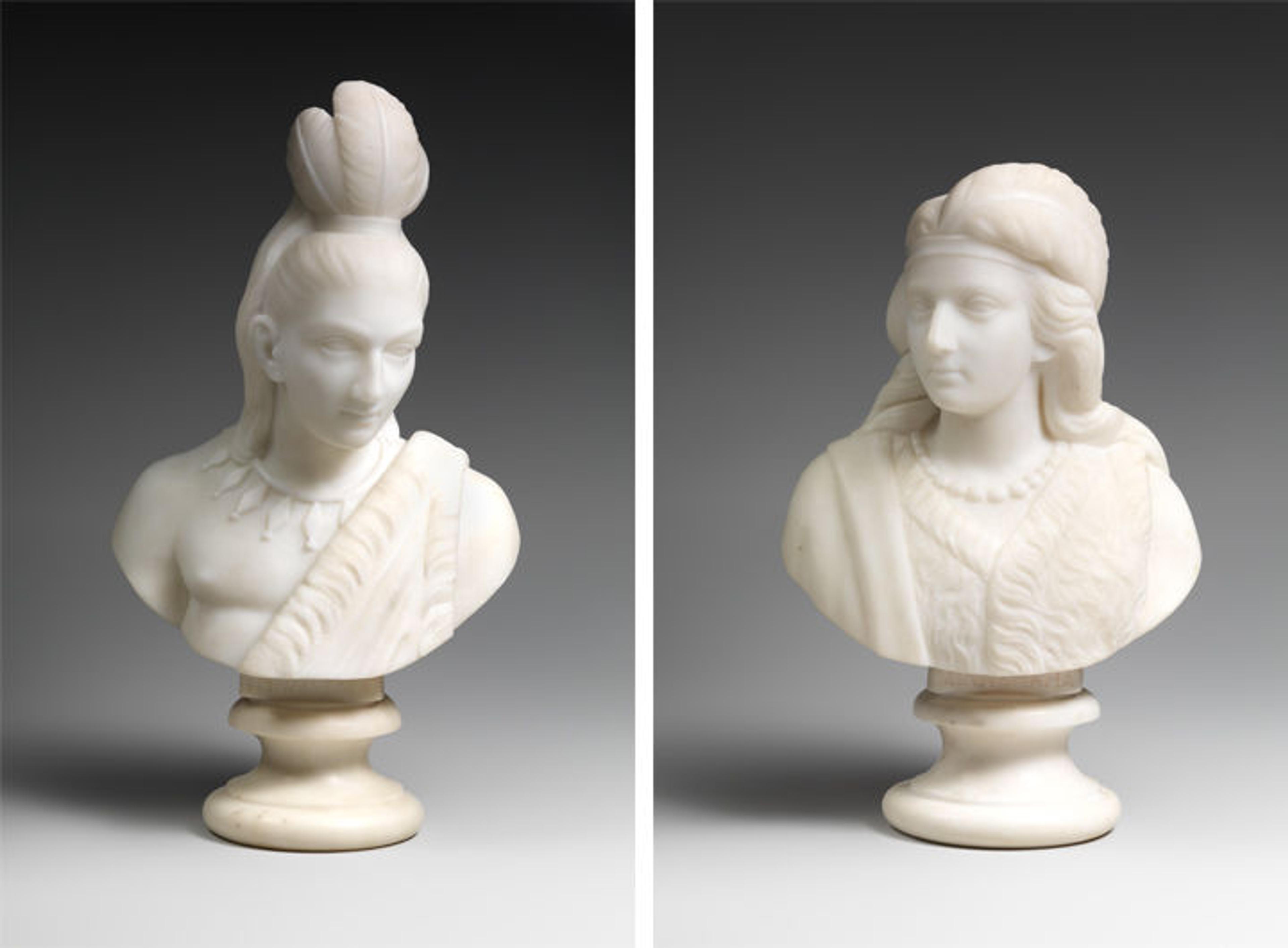Celebrate Black History Month with Art!

From left to right: Sojourner Truth, Robert S. Duncanson, and Edmonia Lewis
«Explore the lives of Sojourner Truth, Robert S. Duncanson, and Edmonia Lewis through art! They each lived in New York as children. Their lives spanned America's Civil War (1861–1865), when the North and South were divided over the issue of slavery. Read on to find out more about these trailblazers who left their marks on history.»
Sojourner Truth

Unknown (American). Sojourner Truth, "I Sell the Shadow to Support the Substance," 1864. Albumen silver print from glass negative, image: 3 3/8 x 2 1/8 in. (8.5 x 5.4 cm). The Metropolitan Museum of Art, New York, Purchase, Alfred Stieglitz Gifts, 2013 (2013.54)
Sojourner Truth was born into slavery in 1797 in Ulster County, New York. She escaped in 1827 after she ran away with her baby Sophia, one of five children. Sojourner and Sophia stayed with a family of abolitionists—people who believe in ending slavery. They bought Sojourner's freedom and helped her get back her five-year-old son, Peter. Sojourner became a preacher, abolitionist, and champion for women's rights. In 1850, she told her story in a book, Narrative of Sojourner Truth, A Northern Slave. She gave speeches to convince others of the equality of African Americans and women. She helped slaves escape to freedom.
This photograph was made during the Civil War. Look at Sojourner's hands in the photograph. She paused her knitting to look thoughtfully at us. What do you notice about her expression? Sojourner decided how to present herself in this portrait and composed the phrase on the card mount: "I sell the shadow to support the substance." She sold her portrait, her "shadow," to raise money for her causes. That's right! Sojourner used photography to champion the rights of African Americans and women.
Robert S. Duncanson

Robert S. Duncanson (1821–1872). Landscape with Cows Watering in a Stream, 1871. Oil on canvas, 21 1/8 x 34 1/2 in. (53.7 x 87.6 cm). The Metropolitan Museum of Art, New York, Gift of Mr. and Mrs. Lawrence A. Fleischman, 1974 (1974.359)
Robert Selden Duncanson was born to free black parents in 1821 in Fayette (Seneca County), New York. He and his family moved to Michigan when Robert was young. When he was a teenager, Robert learned the family trade of house painting, but he really wanted to be an artist. He taught himself how to make art by drawing still lifes and portraits, and copying printed images. Robert especially enjoyed painting scenes of nature. In the early 1840s, he moved with his mother to the Cincinnati area, where he became known for his portraits and landscapes. By 1861, American newspapers called him "the best landscape painter in the West." Robert's paintings were commissioned, or ordered, by wealthy people. Some were abolitionists. Others were philanthropists—people who donate money for the benefit of others. Robert also donated paintings to anti-slavery groups to raise money.
Robert painted this landscape six years after the end of the Civil War. Zoom in to see the details. What do you notice about the leaves and cows in the foreground (the part of the picture closest to us)? How are the trees and people in the middle ground painted differently? Take a look at how Robert suggests the background by blending the colors of the plants and mountain.
Edmonia Lewis

Edmonia Lewis (American, 1844–1907). Hiawatha, 1868. Marble, 13 3/4 x 7 3/4 X 5 1/2 in. (34.9 x 19.7 x 14 cm). The Metropolitan Museum of Art, New York, Morris K. Jesup and Friends of the American Wing Funds, 2015 (2015.287.1). Right: Edmonia Lewis (American, 1844–1907). Minnehaha, 1868. Marble, 11 5/8 x 7 1/4 x 4 7/8 in. (29.5 x 18.4 x 12.4 cm). The Metropolitan Museum of Art, New York, Morris K. Jesup and Friends of the American Wing Funds, 2015 (2015.287.2)
Edmonia Lewis was born in 1844, probably in upstate New York. She came from an African American and Native American background. As a child, Edmonia lived with her mother's tribe, the Chippewa (Ojibwa). After both her parents died, she was raised by her aunt (her mother's sister). Edmonia first became interested in visual arts as a student at Oberlin College in Ohio. She moved to Boston in 1862, where she met the sculptor Edward A. Brackett. He taught her and also introduced her to some of the leading abolitionists of the day. Edmonia's first sculptures were of abolitionists and heroes of the Civil War. The most popular was a portrait of Colonel Robert Gould Shaw. He led the first all-black 54th Massachusetts Regiment during the Civil War. In 1866, after Edmonia earned money from selling her sculptures, she moved to Rome, Italy. There she joined other American sculptors who came to Rome for the artistic riches and beautiful Italian marble.
Look at two of the sculptures Edmonia carved. On the left is Hiawatha and on the right is Minnehaha.What do you notice about how they are dressed? You can imagine the feeling of the fur clothes, feather headdresses, and necklaces. Edmonia uses Native American dress and accessories to portray her subjects: Hiawatha and Minnehaha.These sculptures were inspired by Henry Wadsworth Longfellow's epic poem, The Song of Hiawatha (1855). In the poem, the two Native Americans fall in love even though they come from nations that were once at war. Many of Edmonia's subjects were based on Native American and African American themes.
Want to know more? Check out last year's post to discover more about the important role education plays in the history of African Americans.
Visit #MetKids, a digital feature made for, with, and by kids! Discover fun facts about works of art, hop in our time machine, watch behind-the-scenes videos, and get ideas for your own creative projects.

Kimberly Sebesanu
Kimberly Cionca is a MuSe Intern for MetKids Media Production and Online Features.